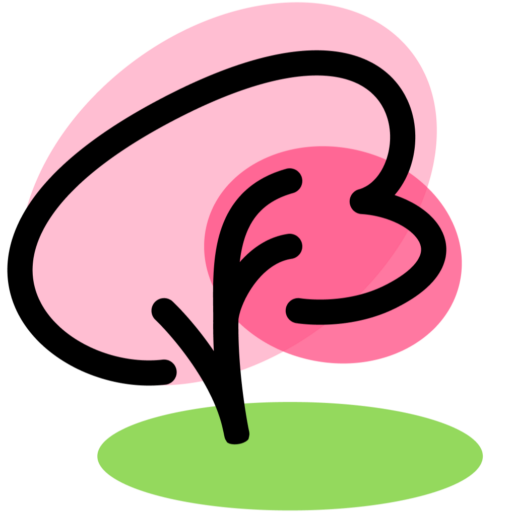2019 Haiku Invitational
Cherry trees require cold weather to flower and fruit, but can be identified in winter by their bark, where pores facilitate the exchange of gases from inside the tree to the outside environment. They are as compelling scientifically as they are admired for their beauty, especially for that brief period of time when the blossoms emerge. These moments have been captured by the poets who submitted to this year’s Vancouver Cherry Blossom Festival haiku contest. The entries were as diverse as the blossoms themselves. Many of these haiku exemplified the theme of “reconciliation,” as seen through the poets’ eyes. We have chosen some of our favorites, from across the world, to share with you and hopefully induce you to see and experience cherry blossoms in new ways.
The following comments on each poem are by 2019 Haiku Invitational judges, Alan S. Bridges, Susan Constable, Julie Warther
Vancouver
spring morning—
a cherry blossom
breaks the silence
Aaron Barry
Port Moody, BC
A standout haiku usually has multiple appealing components, and in this instance it is the auditory effect that accentuates the message, without engulfing it. We are drawn to the scene by the double “ing”s in the opening line, which are then softened by repeated “s” sounds as the message unfolds. It could be interpreted that a couple has nothing to discuss until a magical blossom inspires conversation, but it might also be viewed metaphysically that a cherry blossom has taken on a “voice” of its own, breaking the silence of the scene by its astonishing beauty. It takes a keen poetic mind to express this feeling in a few well-chosen words.
British Columbia
family reunion
cherry blossoms open
each conversation
Beth Skala
Nanaimo, BC
“Aren’t they spectacular? They remind me of when . . .” Even the most joyous of family reunions can feel a bit awkward, seeing relatives for the first time since the last reunion and not knowing what to say or where to start. Thank goodness for neutral conversation starters! We might talk about the weather, or our delight in spotting the first crocus, or hearing a robin’s first song. Here, it’s the delicate color of cherry blossoms, and meeting again with those in our family, whether large or small. Ending the second line with “open” enables the reader to visualize the blossoms moving from closed to open . . . and then the surprise of blossoms opening a conversation, while family members lose their self-consciousness and perhaps open their arms to each other.
Canada
cherry blossoms
a new bay window
for the homeless shelter
Harvey Jenkins
Winnipeg, Manitoba
This poem presents an interesting take on the theme of “reconciliation.” How do we reconcile our golden-rule ideals with the reality of the homeless? It has been said that the “working poor” are one crisis away from homelessness. How fragile this life is. So, too, the cherry blossoms! One day blooming brightly, the next—spent and gone. There’s an investment in the lives of the marginalized with the existence of this managed shelter and a new bay window—not just a new window, but a new bay window, a window with a broader view. This poem lets readers place themselves on the outside looking in, or on the inside looking out. From either position, there is beauty, hope, and a reminder of what a thin pane lies between us all.
United States of America
sakura blossoms
loose in an envelope
priority mail
Neal Whitman
Pacific Grove, California
A well-crafted haiku can spin a full-length tale in the confines of three short lines. In this convincing poem the poet has done just that, from start to finish, complete with a plot twist. What are sakura blossoms doing in an envelope? We place ourselves in the scene and conjure a missing loved one who may live in a temperate climate, lacking cherry trees that bonded two people in the past. They are still connected via the blossom memory, but the poet has included the fragility and import of the moment with the words “loose” and “priority.” These elusive moments need to be captured and shared, as they have been here.
International
cherry blossoms
opening a rusty wicket
to the neighbor
Henryk Czempiel
Strzelce Opolskie, Poland
Cherry blossoms, in Japanese culture, signify the fragility and beauty of life. Time is fleeting, so why waste it on anything negative? We pause to think about this and to picture the cherry blossoms in our imaginations. We may hear them in a breeze, watch a few flutter to the ground, or become aware of their delicate scent. Perhaps the desire to live in harmony with a neighbour and seeing the beauty of the cherry tree in bloom prompts someone to physically open a wicket that’s rusted shut from lack of use. Maybe the neighbours can begin to mend a relationship and appreciate each other—and the blossoms—from both sides of the gate.
Youth
Full moon hanging
in the silence of the night
cherry blossoms
Mia Lin, age 12
Vancouver, BC, Canada
This is an exquisite haiku from a poet of any age, let alone a twelve-year-old! The natural image in the first two lines immediately captures our attention and we see the moon, like a holiday ornament or child’s mobile, magically “hanging” in the night sky. The poet asks us to open our ears, as well as our eyes, but there is only silence. Although we may initially read the first two lines as one thought, we soon discover the last two lines can also be read together. The two phrases in the middle line slow down the reading, and the sibilance of “silence” and “blossoms” increases the musicality of this delightful haiku.
2019 Haiku Invitational Judge Bios:
 |
Alan S. Bridges began writing haiku in 2008. In 2011, he was included in A New Resonance 7: Emerging Voices in English-Language Haiku (Red Moon Press). Alan won the Irish Haiku Society International Haiku Competition in 2013 and in 2014 he judged the Haiku Society of America Gerald Brady Senryu Contest and won an honorable mention for the 25th Ito En Oi Ocha New Haiku Contest—his haiku appeared on bottles of Ito En green tea in 2015. Also in 2015, he won first prize in the Kaji Aso Studio International Haiku Contest and Haiku Northwest’s Porad Haiku Award. In 2017 he won the Robert Spiess Memorial Haiku Competition, sponsored by Modern Haiku, and was voted Poet of the Year (for 2016) by the readers of The Heron’s Nest, and was a winner of the Snapshot Press eChapbook contest for In a Flash, a series of train-themed haiku. In 2018 he was again voted Poet of the Year (for 2017) by the readers of The Heron’s Nest and was awarded first place in the Peggy Willis Lyles Haiku Awards. In his spare time Alan enjoys skiing, golf, fishing, peaceful walks and hikes, and hunting for wild mushrooms, fossils, and arrowheads with his copartners in crime. |
 |
Susan Constable’s haiku have appeared in A New Resonance 6 and several Red Moon anthologies, Montage: The Book (The Haiku Foundation), Haiku in English: The First 100 Years (W. W. Norton), andThe Wonder Code (Girasole Press). She coedited Rainsong (the 2014 Seabeck haiku anthology), as well as Ripples in the Sand (the 2016 Tanka Society of America anthology). Susan judged the 2011 Francine Porad Haiku Contest and cojudged the Gerald Brady Senryu Contest in 2012. She’s also won a few awards herself, including the eChapbook award from Snapshot press for her tanka sequence The Eternity of Waves. From 2012 to 2016 she was tanka editor for the international online journal, A Hundred Gourds. She lives on Vancouver Island, part of Canada’s beautiful west coast. |
 |
Julie Warther, author of What Was Here (Folded Word Press) lives in Dover, Ohio and serves as Midwest regional coordinator for the Haiku Society of America (www.hsa-haiku.org), as an associate editor atThe Heron’s Nest (www.theheronsnest.com) and on the Red Moon Anthology editorial team. She was one of seventeen poets featured in A New Resonance 9 (Red Moon Press) and coedited, with Jim Kacian, Echoes 2 and A New Resonance 11, both from Red Moon Press. In addition, Warther was instrumental in establishing the Forest Haiku Walk in Millersburg, Ohio (https://www.innathoneyrun. |

